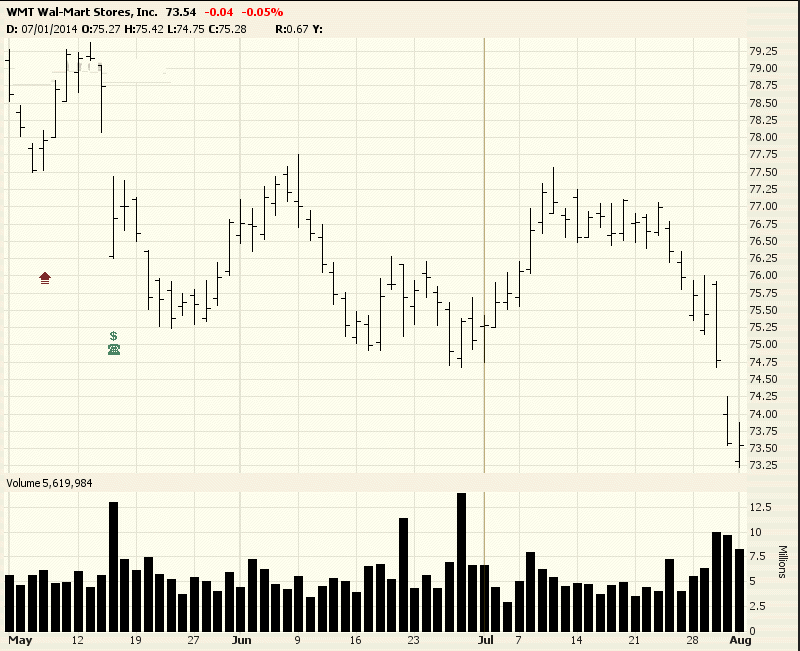WalMart Stores Inc (WMT) Preferred Stock
Post on: 16 Март, 2015 No Comment

Wal-Mart Stores Inc (NYSE:WMT)
Preferred Stock
$0 Mil (As of Oct. 2014)
Preferred stock is a special equity security that has properties of both equity and debt. Wal-Mart Stores Inc’s preferred stock for the quarter that ended in Oct. 2014 was $0 Mil .
The market value of preferred stock needs to be added to the market value of common stocks in the calculation of enterprise value. Wal-Mart Stores Inc’s enterprise value for the quarter that ended in Oct. 2014 was $299,729 Mil.
In the calculation of book value, the par value of preferred stocks needs to subtracted from total equity. Wal-Mart Stores Inc’s book value per share for the quarter that ended in Oct. 2014 was $24.51.
Dividends paid to preferred stocks need to be subtracted from net income in the calculation of earnings per share (EPS). Wal-Mart Stores Inc’s diluted earnings per share (EPS) for the three months ended in Oct. 2014 was $1.15 .
Definition
Preferred Stock is a special equity security that has properties of both equity and debt. It is generally considered a hybrid instrument. Preferred stock is senior to common stock, but is subordinate to bonds in terms of claim or rights to their share of the assets of the company.
Preferred stock has priority over common stock in the payment of dividends and any payments received when a company liquidates.
Preferred stock comes in many forms. It can be:
Convertible or Non-Convertible
Cumulative or Non-Cumulative
Voting or Non-Voting
Callable or Non-Callable
Maturity Date or No Maturity Date
A preferred stock without a maturity date is called a perpetual preferred stock. These are relatively rare. A good example of perpetual preferred stock is the many series of Public Storage (PSA) preferred shares that trade on the New York Stock Exchange.
Before investing in preferred stock, it is important to know which of the above groups the stock belongs to. Is it convertible or non-convertible? Are dividends cumulative or non-cumulative?
It is also critical that an investor knows what bonds the company has in front of the preferred stock. Bondholders get paid first. So the decision to buy a preferred stock can be similar to the decision to buy a bond. But, remember, the preferred stock of a company with bonds is junior to those bonds.
Unless a preferred stock is convertible, the upside in a preferred stock investment is more limited than in a common stock investment. If a company doubles its earnings, it is usually under no more obligation to double the dividends paid to preferred shareholders than it is to double the interest paid to its bankers and bondholders.So preferred stock is very different from common stock.
Explanation
When a company needs capital but does not wish to issue debt, they may sell preferred stocks to investors.
For instance, during the financial crisis of 2008, Goldman Sachs (GS) issued a combination of preferred stock and common stock options for $5 billion of capital to Warren Buffetts Berkshire Hathaway (BRK.A)(BRK.B). In this deal, Berkshire Hathaway paid $5 billion for 10% cumulative perpetual preferred stock and warrants to buy 43.5 million shares of Goldman Sachs at $115 a share. Goldman Sachs bought back the preferred in 2010. Guess how much money Warren Buffett made in this deal in two years? Read How Much Did Warren Buffetts Berkshire Hathaway (BRK.B) Make on Its Goldman Sachs (GS) Preferred Stock?
1. The market value of Preferred Stocks needs to be added to the market value of common stocks in the calculation of enterprise value.
Wal-Mart Stores Inc’s Enterprise Value for the quarter that ended in Oct. 2014 is calculated as














